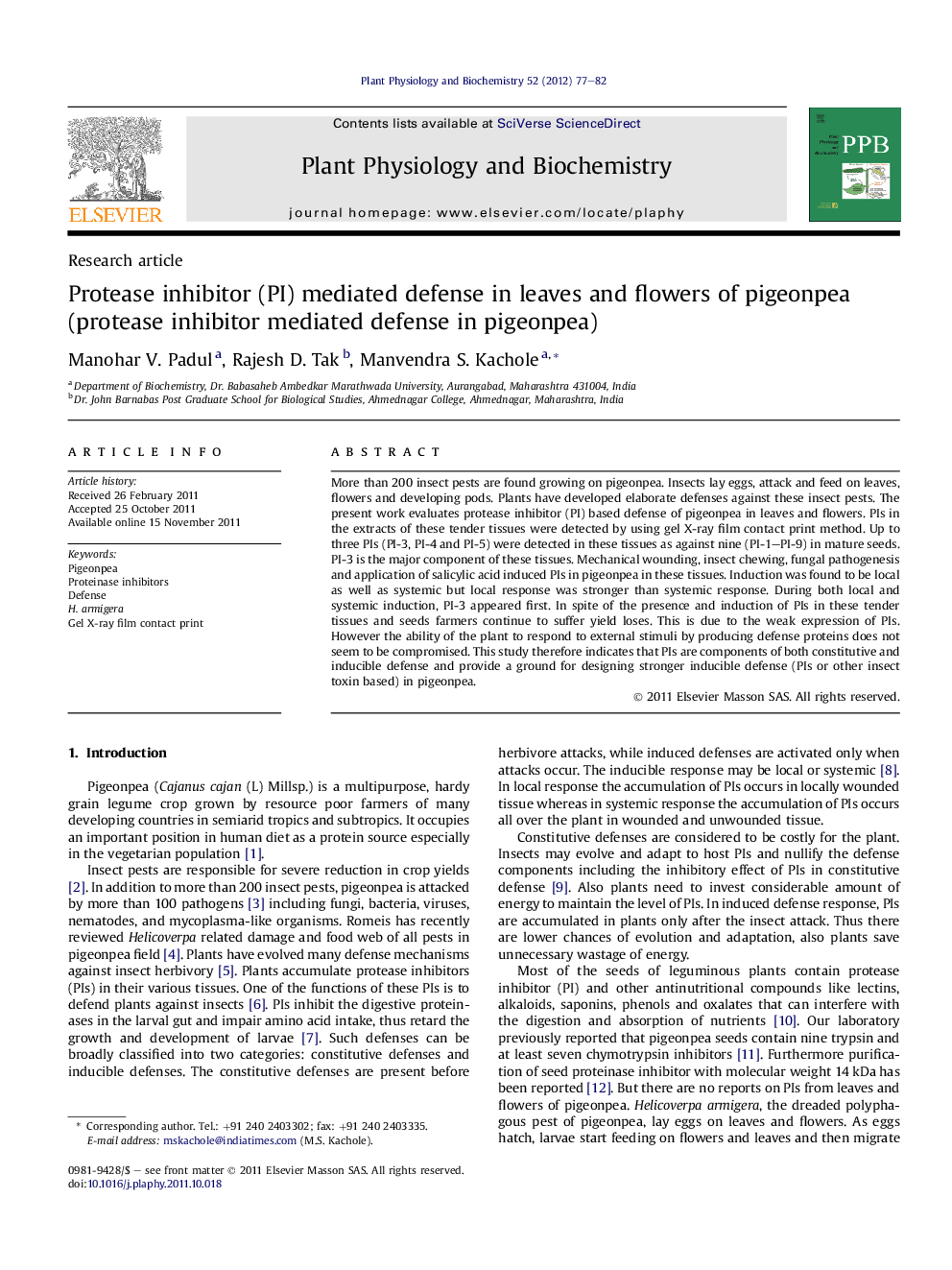| Article ID | Journal | Published Year | Pages | File Type |
|---|---|---|---|---|
| 2016275 | Plant Physiology and Biochemistry | 2012 | 6 Pages |
More than 200 insect pests are found growing on pigeonpea. Insects lay eggs, attack and feed on leaves, flowers and developing pods. Plants have developed elaborate defenses against these insect pests. The present work evaluates protease inhibitor (PI) based defense of pigeonpea in leaves and flowers. PIs in the extracts of these tender tissues were detected by using gel X-ray film contact print method. Up to three PIs (PI-3, PI-4 and PI-5) were detected in these tissues as against nine (PI-1–PI-9) in mature seeds. PI-3 is the major component of these tissues. Mechanical wounding, insect chewing, fungal pathogenesis and application of salicylic acid induced PIs in pigeonpea in these tissues. Induction was found to be local as well as systemic but local response was stronger than systemic response. During both local and systemic induction, PI-3 appeared first. In spite of the presence and induction of PIs in these tender tissues and seeds farmers continue to suffer yield loses. This is due to the weak expression of PIs. However the ability of the plant to respond to external stimuli by producing defense proteins does not seem to be compromised. This study therefore indicates that PIs are components of both constitutive and inducible defense and provide a ground for designing stronger inducible defense (PIs or other insect toxin based) in pigeonpea.
Graphical abstractMechanical wounding, fungal pathogenesis, salicylic acid treatment and Helicoverpa armigera chewing induce protease inhibitors in pigeonpea. Local induction is stronger than systemic induction.Figure optionsDownload full-size imageDownload as PowerPoint slideHighlights► Local response was found to be stronger than systemic response in leaves. ► Two and three PIs were detected during mild and severe attack of powdery mildew. ► PIs induction was more when leaves were chewed by Helicoverpa. ► PI-3 was found appearing early. ► PIs of pigeonpea leaves showed inhibitory activity against Helicoverpa gut proteases.
